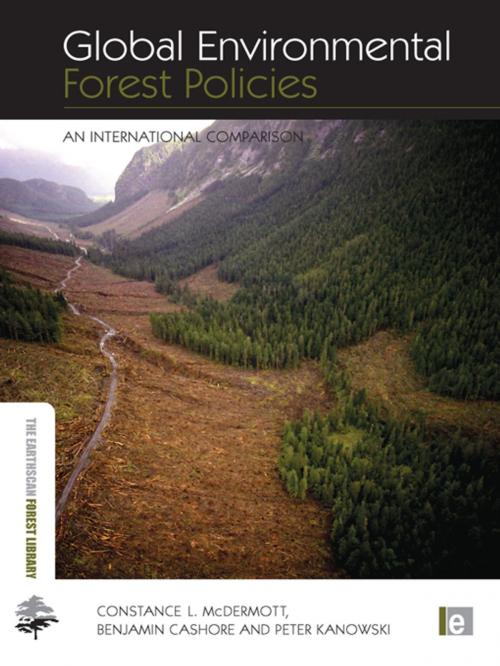Global Environmental Forest Policies
An International Comparison
Nonfiction, Science & Nature, Technology, Agriculture & Animal Husbandry| Author: | Constance McDermott, Benjamin Cashore, Peter Kanowski | ISBN: | 9781136542640 |
| Publisher: | Taylor and Francis | Publication: | August 12, 2010 |
| Imprint: | Routledge | Language: | English |
| Author: | Constance McDermott, Benjamin Cashore, Peter Kanowski |
| ISBN: | 9781136542640 |
| Publisher: | Taylor and Francis |
| Publication: | August 12, 2010 |
| Imprint: | Routledge |
| Language: | English |
Market globalization and the globalization of environmental concerns have spurred demand for greater international accountability for forest stewardship. In response, a range of multi-lateral governmental and non-governmental initiatives have emerged to redefine the rules of global trade, and demand verification of the legality and/or sustainability of forest products originating from within and outside national boundaries.
At the same time there is a lack of transparency and shared understanding about the environmental forest policies that already exist within the world's leading forest producing and consuming countries. The result is that many stakeholders have developed perceptions about a country's regulatory environment that are not consistent with what is actually taking place. This book provides a uniquely detailed and systematic comparison of environmental forest policies and enforcement in twenty countries worldwide, covering developed, transition and developing economies. The goal is to enhance global policy learning and promote well-informed and precisely tuned policy solutions.
Market globalization and the globalization of environmental concerns have spurred demand for greater international accountability for forest stewardship. In response, a range of multi-lateral governmental and non-governmental initiatives have emerged to redefine the rules of global trade, and demand verification of the legality and/or sustainability of forest products originating from within and outside national boundaries.
At the same time there is a lack of transparency and shared understanding about the environmental forest policies that already exist within the world's leading forest producing and consuming countries. The result is that many stakeholders have developed perceptions about a country's regulatory environment that are not consistent with what is actually taking place. This book provides a uniquely detailed and systematic comparison of environmental forest policies and enforcement in twenty countries worldwide, covering developed, transition and developing economies. The goal is to enhance global policy learning and promote well-informed and precisely tuned policy solutions.















